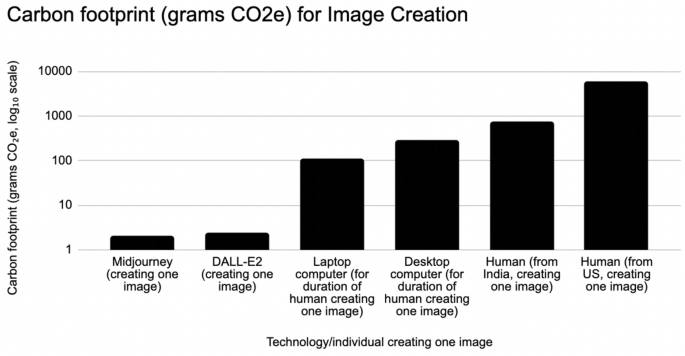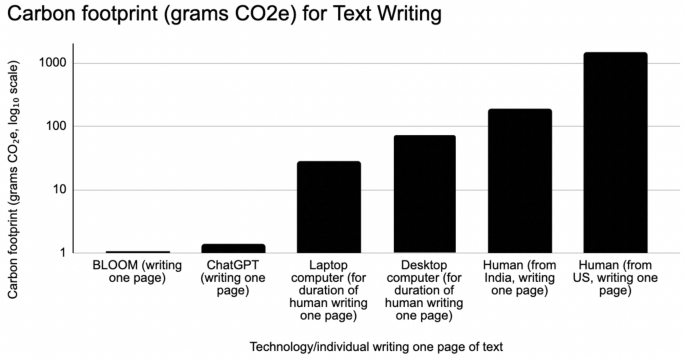[…] In this article, we present a comparative analysis of the carbon emissions associated with AI systems (ChatGPT, BLOOM, DALL-E2, Midjourney) and human individuals performing equivalent writing and illustrating tasks. Our findings reveal that AI systems emit between 130 and 1500 times less CO2e per page of text generated compared to human writers, while AI illustration systems emit between 310 and 2900 times less CO2e per image than their human counterparts. Emissions analyses do not account for social impacts such as professional displacement, legality, and rebound effects. In addition, AI is not a substitute for all human tasks. Nevertheless, at present, the use of AI holds the potential to carry out several major activities at much lower emission levels than can humans.
[…]
Note: the graphs have a logarithmic y-axis



